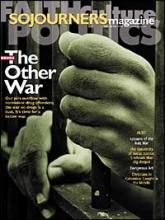When representatives of 40 denominations, communions, and Christian organizations gathered in late January 2003 at Fuller Seminary in Pasadena, California, no one knew for sure the outcome. Eighteen months earlier a nucleus of this group had met outside of Baltimore to begin asking whether it was possible to form a new, more inclusive structure of Christian fellowship. Their vision was to draw mainline Protestant, Catholic, evangelical, pentecostal, Orthodox, and historic black churches to a fresh table of ecumenical participation.
Nothing quite like it had ever been tried in the United States. The National Council of Churches of Christ encompasses mainline Protestant, Orthodox, and historic black churches, but not others. The National Association of Evangelicals was organized largely in reaction to the NCC. Suspicion and hostility between the two groupings has long spread division and mistrust. Meanwhile, the U.S. Conference of Catholic Bishops has not officially joined any wider ecumenical fellowship in the United States.
Around the world, the situation is quite different. In about 65 countries, the Catholic Church is a full member in such national church councils or associations. The National Council of Churches in Korea recently welcomed the Assemblies of God. Likewise, the South African Council of Churches now includes two of the largest pentecostal bodies in that country. And in many countries, national ecumenical organizations have undergone radical changes to build a fellowship that expresses more fully the breadth of the Christian community within their land, as church leaders have concluded that new ecumenical wine cannot be poured into old wineskins.
Read the Full Article
